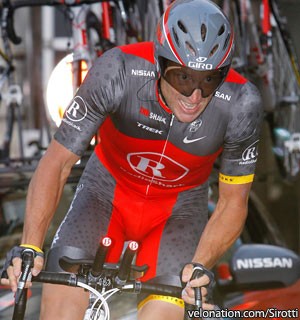Anti-doping scientists both feel blood profile indicates likely blood doping
 Anti-doping researcher Michael Ashenden has echoed a recent statement by fellow scientist Robin Parisotto, saying that in his opinion, Lance Armstrong’s 2009 blood profiles are suggestive of blood doping.
Anti-doping researcher Michael Ashenden has echoed a recent statement by fellow scientist Robin Parisotto, saying that in his opinion, Lance Armstrong’s 2009 blood profiles are suggestive of blood doping.
Both Australians were part of the UCI’s expert group which assessed its biological passport programme, and are amongst the top experts in this area of science. Three years ago another anti-doping scientist Jakob Morkeberg told this writer he also had questions about the Texan’s values.
Examining Armstrong’s blood results during the 2009 Tour de France, Ashenden said that there were two aspects which appear irregular. The first was the fact that Armstrong’s system showed a lower-than-expected level of reticulocytes, young red blood cells which are generated as part of the body’s normal turnaround of the more mature haemoglobin molecules.
Thre level of reticulocytes was lower than usual, something which Ashenden feels is consistent with a blood transfusion. “Suppressed red blood cell production is a classic signature associated with blood doping,” Ashenden told California Watch. “The body reacts to the presence of excess red cells in circulation by suppressing the bone marrow’s production of new cells.”
Ashenden also pointed out that during a three week race, the level of red blood cells should fall as a result of the strain of the event.
Parisotto previously voiced his concerns on the Down the Backstretch site, saying that the overall profile over several months did not follow an expected pattern.
“The absence of a natural decline in blood concentration during a three-week race is also consistent with blood doping,” said Ashenden.
In 2009, Armstrong posted the blood values for both races on the LiveStrong.com website, using this as an attempt to show he was being transparent in his return to the sport.
According to those figures, he started the Giro d’Italia with a haematocrit reading of 43.5, while he was at 42.8 at the beginning of the Tour.
However, while the Giro reading fell to 38.2 percent by the end of the race, representing a drop of 5.3 points, his Tour value actually increased 0.2 points; a clear contrast which Ashenden and Parisotto feel are consistent with receiving blood transfusions during the race.
Armstrong spokesman Mark Fabiani attempted to dismiss Ashenden’s reasoning. “The rules are clear to everyone but USADA: You either pass a drug test, or you fail it,” he wrote in an email. “There is no in between. Lance Armstrong has passed every test ever given to him, including every test administered during the 2009 Tour de France.”
However his statement does not acknowledge that biological passport positives are not based on the results of any one test, but on the pattern of values over time. USADA’s case against Armstrong is thought to include a similar blood profile analysis.
USADA has imposed a lifetime ban and stripped Armstrong’s results since 1998. It took the action after the Texan decided not to fight the anti-doping case which was due to go to arbitration this autumn.
Its reasoned decision, a file containing its justification for the sanctions plus much of the evidence, is due to be sent to the UCI and WADA before October 15th.